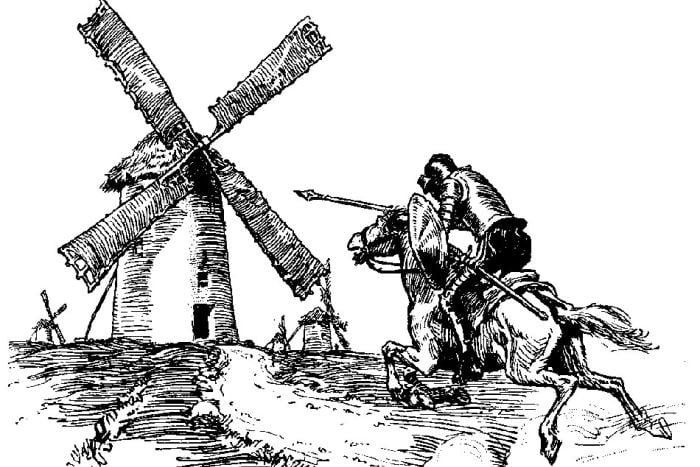Failure is relative, this we know. In the book world, a monster advance makes pitifully inadequate otherwise decent sales. For a first-time marathoner, a six-hour finish is a triumph. And at the movies and elsewhere, time has a way of arranging things in their proper place. One need only run down the list of Oscar winners across the decades for a sense of how skewed a film’s first reception can be. Similarly, through the regenerative powers of television, video, and now the Internet, movies that croaked or were otherwise ill received on initial release have room to find their rightful audience, and appreciate in value.
A critic’s failure, on the other hand, only grows more conspicuous. Few things grieve a film critic more than the realization that he or she might have gotten it wrong. Last fall Slate critic Dana Stevens took two cracks at The Master, and Roger Ebert never let his first impression get in the way of a movie’s legacy. The latter included The Godfather II and Unforgiven, films he treated critically on their release, in a later edition of his Great Movies anthology.
Great movies miss their moment for any number of reasons; studios have turned release calendars into astrology charts trying to figure these things out. Some, like Donnie Darko, which was released the week of September 11, 2001, suffer from bad timing; others, like Bringing Up Baby, suffer from a bad time in their star’s career (1938 found Katharine “box office poison” Hepburn in the throes of a backlash). The Good, the Bad, and the Ugly was deemed too violent in 1966, The Night of the Hunter too stylized in 1955, Starship Troopers too kitschy in 1997, and Blade Runner too dark and moody for the summer of 1982.
But time is timing’s best antidote, and perhaps a heartbroken director’s only comfort. In honor of Failure Week, a look at some floppish films turned classics.
Citizen Kane/The Magnificent Andersons
Orson Welles is perhaps film history’s most radiant example of successful reclamation. In 1941 Citizen Kane was met with controversy, rapturous reviews, and limp box office. The film’s inspiration, powerful newspaper baron William Randolph Hearst, was not pleased to be the rough original of Welles’s Charles Foster Kane, and rumors of his interference in the film’s release are now part of its legend. Television showings and the adoration of French critics helped revive the film’s reputation: since the mid-1950s it has regularly appeared at the top of lists of the best films of all time.
Not so The Magnificent Ambersons, Welles’s second film. Completed by the studio without Welles’s participation in 1942, it is the movie Welles claims broke his heart. Even so, it has gained recognition as something of a lost classic. In keeping with the frustrated arc of his career, Welles’s hope, twenty years later, of re-shooting the film’s ending with the surviving cast was never realized.
Vertigo
Along with offering Citizen Kane some competition on lists of all-time best films, Vertigo shares with its competitor a cool initial box office reception. It earned out but just barely, and the reviews were deeply mixed. In his directorial prime in 1958, when Vertigo was released, Hitchcock was used to more unanimous acclaim, and later blamed the film’s “failure” on the casting of 50-year-old Jimmy Stewart as the obsessive lover of young Kim Novack. Critics have not felt the same, and the film’s reputation has scaled towering (ahem) heights, a journey that ended more happily than Vertigo does, with its first number one showing, last year, on Sight and Sound magazine’s once-a-decade critics poll.
It’s a Wonderful Life
Initially received as a disappointment, perhaps even bad news about its director’s career, Frank Capra’s weeper is now a staple of critic lists. On its 1946 release reviews were mixed and the studio behind the film took a half-million dollar loss. Even the FBI made its displeasure known, issuing a memo that suggested Communists might be behind the film’s negative depiction of a certain wealthy banker. It’s a Wonderful Life, again thanks to television, gained a second, more wonderful life as a Christmas movie, something that came as a surprise to Capra but perhaps not to Jimmy Stewart, who named it as his favorite—sorry Vertigo—of his own films.
Harold and Maude
It took twelve years for Harold and Maude, Hal Ashby’s 1971 film about a romance between a very young man and a very much older woman, to turn a profit. The first reviews faulted the story’s overdone contrast of a morbid ‘60s youth and a vibrant Holocaust survivor. Perhaps it is this extremity that earned the attention of later audiences, viewers unconcerned that the film should reflect its moment or its themes with more subtlety. Instead it played as a fabled love story, and Harold and Maude gathered a cult following as well as critical respect. It has since appeared on numerous AFI lists and last year its legacy was re-cemented when Criterion released a special Blu-ray edition.
Heaven’s Gate
Tens of millions of dollars over budget and inflated to bursting with auteurist hubris, Heaven’s Gate marked the end of the independent filmmaking renaissance of the 1970s. Little seen following its disastrous release in 1980 (it made only three million dollars) and subject to cut after director’s cut, Heaven’s Gate was shown, to much critical fanfare, at the Venice and New York film festivals this past fall, and recently played a week-long run in New York City.
When I sat down to watch the recently released Criterion Collection edition of Michael Cimino’s infamous studio-buster, I was primed to reclaim. Having managed to absorb almost nothing of the film’s content over the years, my first Heaven’s Gate viewing was both full and free of expectation: the movie so fully embodies its reputation—bloated, beautiful, the overblown end of an era—that it distracts from an already scattershot story. But then this was my first contact. Give me thirty more years—at least—and I’ll be willing to take another look.
The Shining
The Razzies, Hollywood’s upside-down Oscars, held their first ceremony in 1981. Among their worst director nominees were Brian De Palma for Dressed to Kill, William Friedkin for Cruising, and Stanley Kubrick for The Shining. In a wonderful documentary about The Shining, made by Kubrick’s daughter Vivian when she was just 17, about The Shining, Jack Nicholson describes the film’s risky move away from more modish styles of realism. Contemporary critics responded poorly to the film’s stylized nightmare; some objected to Kubrick’s adaptation of Stephen King’s novel, others to the film’s glacial slowness. But what some dismissed as a bloated B-movie gradually—you might say at a Kubrickian pace—developed a wide audience and appreciation for the film’s renewed engagement with the horror genre and its techniques.
Office Space/Idiocracy
I have to tell you, I made a TPS report joke just the other day. If you know what I’m talking about then you know what I’m talking about: Office Space, Mike Judge’s 1999 film, found a core audience pretty quickly. The reviews were decent but the marketing, according to Judge, left the film a little lost. It took a while but the film eventually earned out its ten million dollar budget, and went on to huge home video sales and a place in the comedy pantheon.
Judge’s luck was even worse with Idiocracy an outrageous 2006 comedy about a future ruled by dumb people. Fox balked at Idiocracy, shelving it for a year and eventually giving it an insultingly tiny release with no marketing. But Judge’s fans managed to find the film, as did critics, who gave it mostly favorable reviews.
Fight Club
This is a case of relative failure: You might be surprised to learn that Fight Club, despite coming up number one at the box office opening weekend, contributed to a studio shakeup. 20th Century Fox had invested $63 million in David Fincher’s 1999 film, and along with the film’s darkness its gross ($100 million worldwide) disappointed Rupert Murdoch. His studio head resigned in mid-2000, following what was perceived of as the failure of Fight Club, The Beach, and Anna and the King. But unlike the other two films, Fight Club has only grown in reputation. I am Jack’s complete lack of surprise.
The Wizard of Oz
Yes, the story of one of the most beloved films of all time started with a minor faceplant. Because it was so expensive to make, the film’s initial box office of about $3 million only barely covered its budget. But MGM gave Oz another theatrical release in 1949, the first of several, and again television showings helped make the film both profitable and a recognized classic for subsequent generations.
Margaret
The failure of Kenneth Lonergan’s follow-up to You Can Count On Me happened in slow motion. It happened, in fact, without anyone having seen it. Shot in 2005, the movie passed through numerous edits—one by Martin Scorsese—and generated several lawsuits before it was finally released, in two theaters, in September 2011. Its $50 thousand gross on budget of over $12 million seemed like the final insult. But critics rallied around the film, and a campaign to bring the film back to theaters and into awards consideration was successful. Based on a random sampling of moviegoers that includes my father and some friends, all of whom Margaret has dazzled since its DVD release last year, the future will only grow kinder to Kenneth Lonergan’s psychologically epic New York story.





